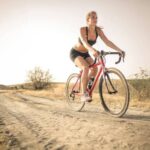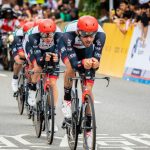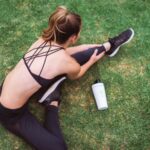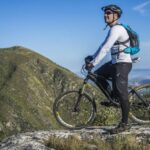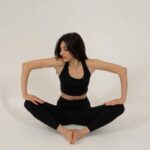Experiencing discomfort or pain in the buttocks during or after cycling is a common issue for many riders, irrespective of their experience level. Often attributed to the pressure and friction between the rider’s body and the bicycle saddle, this pain is colloquially known as ‘saddle soreness.’ Regular cycling can lead to this soreness subsiding over time as the body acclimates to the activity. However, persistent soreness may indicate the need for changes in equipment or riding posture.
Choosing the appropriate saddle type that matches one’s bike and riding style plays a crucial role in preventing and alleviating butt pain. Riders can also consider handlebar adjustments for better positioning. For some, the use of padded shorts provides sufficient cushioning and relief. In other cases, adjusting saddle height and angle or opting for seats with additional padding or a wider design can significantly enhance comfort.
Butt pain from cycling is not solely due to saddle issues; it can also arise from a cyclist’s anatomy and muscle condition. Tight or strained hip rotators, such as the piriformis muscle, and lower back problems can contribute to discomfort. Therefore, cyclists may benefit from targeted stretches and strengthening exercises to address these underlying issues, complementing any adjustments made to their cycling equipment or attire.
Understanding Cycling Butt Pain
Cycling is a rewarding activity, but it can sometimes lead to discomfort and pain in the buttock area, specifically around the ischial tuberosities and perineum.
Anatomy of Cycling-Related Discomfort
The human buttocks are comprised of layers of muscles, fat, and connective tissues. Two critical bones, the ischial tuberosities, commonly known as “sitting bones,” bear much of the body’s weight while seated. The perineum, the area between the genitals and anus, is particularly vulnerable to pressure when cycling. This area contains nerves and soft tissues that, when compressed for prolonged periods, can cause discomfort or pain.
Common Causes of Soreness and Pain
Several factors can lead to cycling-related buttock pain:
- Inappropriate Saddle Choice: A saddle that doesn’t match the rider’s anatomy or riding style can increase pressure on the ischial tuberosities and perineum, leading to soreness.
- Poor Bike Fit: Incorrect saddle height or handlebar positioning can cause the rider to shift weight improperly, stressing the sitting bones and perineal area.
- Friction and Chafing: Continuous rubbing against the saddle can irritate the skin and underlying tissues, often causing rash or bruising in the genital area.
- Extended Pressure: Long-duration rides can result in sustained pressure on the ischial tuberosities and perineum, intensifying the risk of numbness or pain.
- Bumpy Terrain: Rough road conditions can cause repeated jolts and impacts, exacerbating discomfort in the buttock region.
The Importance of Proper Saddle Selection
Selecting the right saddle is critical for ensuring comfort and preventing pain during cycling. It directly impacts performance and the overall cycling experience.
Types of Saddles for Different Cyclists
Different types of cycling require saddles with specific features to maximize comfort and efficiency. For instance, road racers typically use narrow, firm saddles that promote a more aggressive riding posture and reduce chafing during long, fast rides. In contrast, mountain bikers benefit from slightly wider seats that can absorb shocks and provide better control during off-road adventures. Commuters, on the other hand, often prefer a wider, more cushioned saddle that supports an upright riding position, suited for visibility and comfort over shorter distances.
- Road Racers: Narrow, firm saddles.
- Mountain Bikers: Wider seats with shock absorption.
- Commuters: Cushioned saddles for an upright posture.
Saddle Padding and Materials
The materials used in saddle construction, along with the type and placement of padding, are vital for a comfortable ride. While too much padding can cause excessive movement and potential chafing, too little may lead to pressure points and numbness. Saddles with a moderate amount of high-density foam or gel can help in distributing pressure evenly. The outer material, whether it’s leather or synthetic, is also important for durability and overall comfort.
- Padding: High-density foam or gel preferred.
- Materials: Choice of leather or synthetic for the outer cover.
Selecting the right saddle with the appropriate padding and materials can make a significant difference in a cyclist’s comfort level, especially on longer rides.
Bike Fit and Adjustment
Proper bike fit and adjustment are essential to prevent butt pain for cyclists. They need to ensure their bike size is correct and that the saddle and handlebars are positioned for their body. These adjustments minimize strain and can significantly enhance comfort during rides.
Finding the Right Bike Size
One’s height and inseam length are good starting points to determine the correct frame size of a bicycle. A cyclist should be able to stand over the frame with a slight clearance between their body and the bike. Manufacturers often provide size charts, but a professional bike fit is recommended for optimal performance and comfort.
Adjusting Saddle Height and Position
The saddle height should allow a slight bend in the knee when the foot is at the bottom of the pedal stroke. Saddle position is equally crucial; it should be set so that when the crank arm is parallel to the ground, the rider’s forward knee is directly over the pedal axle. A simple adjustment to the saddle tilt can prevent unnecessary pressure on sensitive areas.
Here’s a quick checklist for saddle adjustment:
- Height: Knee slightly bent at the bottom of the stroke
- Fore/Aft Position: Knee over pedal axle when crank is parallel to the ground
- Tilt: Level or slightly angled to suit rider comfort
Handlebar Setup and Its Impact
The handlebars influence the rider’s upper body position and can affect weight distribution on the saddle. The handlebar height and reach should allow the rider to grip the bars comfortably without overreaching or straining the back. Adjustments may include adding stem spacers, using a shorter stem, or leveling the seat to alleviate wrist and back discomfort.
For an optimal fit, here is what to consider for handlebar setup:
- Height: Adjust to prevent back strain and allow a natural arm position
- Reach: Bars should be at a comfortable distance without causing overreach
- Grip: Maintain a light grip with straight wrists to avoid nerve compression
Each rider has unique physiology, and it’s important they tailor their bike fit to their specific needs. A professional bike fit may be beneficial for making precise adjustments and getting advice on suitable components.
Cycling Gear and Accessories
To mitigate discomfort and prevent saddle sores, cyclists should invest in quality gear and accessories. The right choices enhance comfort and protection during rides.
Choosing the Right Cycling Shorts
Padded cycling shorts are crucial for a comfortable ride. They come with a foam or gel padding, known as a chamois, which offers cushioning between the rider’s sit bones and the saddle. When selecting cycling shorts, one should look for a snug fit to ensure the padding remains in place, which also helps with compression to support muscle stabilization.
- Fit: Should be tight enough to provide compression but not restrict movement.
- Material: Breathable, moisture-wicking fabrics are ideal.
- Padding: Foam or gel padding to align with the rider’s anatomy for comfort.
Benefits of Chamois Cream
To further reduce friction and prevent chafing, chamois cream can be applied directly to the padding of the cycling shorts or the rider’s skin. This cream is specially formulated to create a frictionless layer that also has antibacterial properties.
- Application: Apply liberally to padded areas of shorts or directly on the skin.
- Selection: Choose a cream suitable for one’s skin type, and that does not break down the padding.
Other Protective Gear
Aside from cycling shorts and chamois cream, other protective gear includes gloves and padded seats. Although not directly related to butt pain, gloves can improve overall comfort and grip, while padded seats can be an alternative or addition to padded shorts.
- Gloves: They prevent hand discomfort and enhance grip control.
- Padded Seats: Offer an extra layer of padding, useful for those who prefer a wider sitting area.
Preventing and Addressing Saddle Sores
To combat saddle sores, cyclists need to adopt strategies focused on hygiene to prevent chafing and implement effective treatment methods to support recovery.
Maintaining Cleanliness and Hygiene
Ensuring proper hygiene is crucial in preventing saddle sores. Cyclists should consistently change out of sweaty cycling gear immediately after rides to reduce the risk of irritation and infection. Showering as soon as possible eliminates bacteria that can lead to sores. Using antibacterial soap or cleanser on the affected areas can further protect against saddle soreness.
- Daily Habits:
- Shower promptly post-ride.
- Use antibacterial or gentle cleansing products.
- Change into clean, breathable clothing after cycling.
The choice of cycling shorts plays a significant role, as well-fitted, padded shorts without seams in high-friction areas minimize chafing. It’s recommended that cyclists avoid wearing underwear beneath cycling shorts to reduce layers that can bunch and cause friction.
- Gear Choices:
- Select well-fitted padded cycling shorts.
- Avoid wearing underwear with cycling shorts.
- Use chamois cream on high-friction areas before a ride.
Treatment and Recovery Techniques
Once saddle sores occur, it is important to treat them promptly to hasten recovery. Applying a warm compress can soothe the area and decrease inflammation. Over-the-counter antibacterial ointments may be used to prevent infection and encourage healing.
- Immediate Actions:
- Apply warm compresses to affected areas.
- Use antibacterial ointments as needed.
- Healing Process:
- Take time off from cycling to allow sores to heal.
- Wear loose, breathable clothing to avoid further irritation.
In persistent or severe cases, one should seek medical attention to avoid complications. Rest and proper treatment are key to a full recovery, allowing cyclists to return to the saddle comfortable and pain-free.
Training and Technique Adjustments
Adjusting training and technique can significantly alleviate cycling-related butt pain. Riders should focus on proper riding position and incorporate adequate rest and recovery into their routines to maintain endurance and prevent injury.
Balancing Riding Position and Technique
Riders should ensure they have a balanced riding position, which involves aligning their saddle properly and adjusting their handlebars to mitigate undue pressure on their sit bones. A correct posture involves a slight forward tilt of the pelvis, maintaining a neutral spine and a relaxed grip on the handlebars. For newbies, participating in a spin class or getting a professional bike fit could provide valuable insights into proper cycling technique. In addition to posture, riders should make a habit of standing up intermittently during long rides to redistribute weight and improve blood flow.
- Correct Saddle Height: Essential for efficient pedalling and reducing strain.
- Handlebar Position: Should allow a slight bend in the elbows without overreaching.
Incorporating Rest and Recovery
Rest and recovery are crucial components of any cycling workout plan, especially for maintaining strength and endurance. Incorporating activities such as yoga can enhance flexibility and core strength, aiding in injury prevention. Riders should have at least one day of rest per week and consider cross-training to use different muscle groups. Recovery rides at a low intensity are also beneficial, particularly for those using a Peloton or engaging in high-intensity training, as it helps flush out lactic acid and prevent muscle stiffness.
- Rest Days: At least one full rest day per week to allow for muscle repair.
- Cross-Training: Engaging in other forms of exercise, such as swimming or running, to build overall fitness.
Advanced Considerations for Regular Cyclists
For regular cyclists tackling various cycling disciplines and intensities, addressing biomechanical and equipment-specific challenges is pivotal. Advanced cyclists must recognize when professional expertise is required to prevent injury and enhance performance.
Adapting to Different Cycling Disciplines
Triathlon Preparation: Triathletes should prioritize adjusting their bikes to suit the unique demands of triathlon cycling. Key adjustments often include:
- Saddle: A proper saddle designed for triathlon can alleviate pressure points.
- Aero Bars: Incorporating aero bars requires a professional bike fit to ensure optimal aerodynamics without compromising power output or causing injury.
It’s vital for cyclists to visit a local bike shop where professionals can assist in selecting the appropriate gear and making necessary adjustments for different cycling disciplines. An improper setup can lead to subpar performance or even injury.
When to Seek Professional Help
Recognizing Injury Signs: Cyclists must be attentive to their body’s cues. Persistent discomfort or pain should be evaluated by a specialist, especially if:
- Pain does not subside even after rest and recovery measures.
- Performance starts to deteriorate or plateau without clear cause.
Professional Bike Fit: Regular cyclists benefit from a professional bike fit to fine-tune their positioning, particularly when:
- Transitioning to a new cycling discipline.
- Introducing new equipment, such as a bike trainer or different pedals.
This ensures that the bike’s configuration supports the rider’s biomechanics efficiently, reducing the risk of chronic injury. A proper bike fit is a worthwhile investment for any dedicated cyclist.
Lifestyle and Long-Term Comfort
Cyclists often confront challenges such as numbness and tingling, but a strategic approach focusing on diet, nutrition, and cross-training can significantly enhance long-term comfort in the sport.
Diet and Nutrition for Cyclists
Cyclists need a balanced diet rich in carbohydrates, proteins, and healthy fats. Carbohydrates supply the necessary energy for long rides, while proteins aid muscle repair and recovery. Ample healthy fats are crucial for joint health. Specific choices like omega-3 fatty acids can reduce inflammation associated with prolonged sitting on a bike saddle. Hydration is also paramount, as dehydration can lead to muscle cramps and discomfort.
Key Components of a Cyclist’s Diet:
- Carbohydrates: Pastas, whole grains, fruits
- Proteins: Lean meats, fish, dairy, legumes
- Fats: Nuts, seeds, avocados
- Hydration: Ample water, electrolyte-rich drinks
Cross-Training and Flexibility
Cross-training exercises build muscle groups that cycling doesn’t typically engage, which can help alleviate pressure and discomfort on the saddle. For instance, strength training can fortify core muscles, leading to better cycling posture and reduced risk of numbness. Flexibility exercises like yoga or Pilates enhance muscular elasticity, promoting blood flow and reducing the risk of nerve compression.
Recommended Cross-Training Activities:
- Strength Training: Squats, lunges, planks
- Flexibility Training: Yoga, Pilates, stretching routines
Incorporating these activities 2-3 times per week not only prevents soreness and discomfort but also optimizes overall cycling performance.

